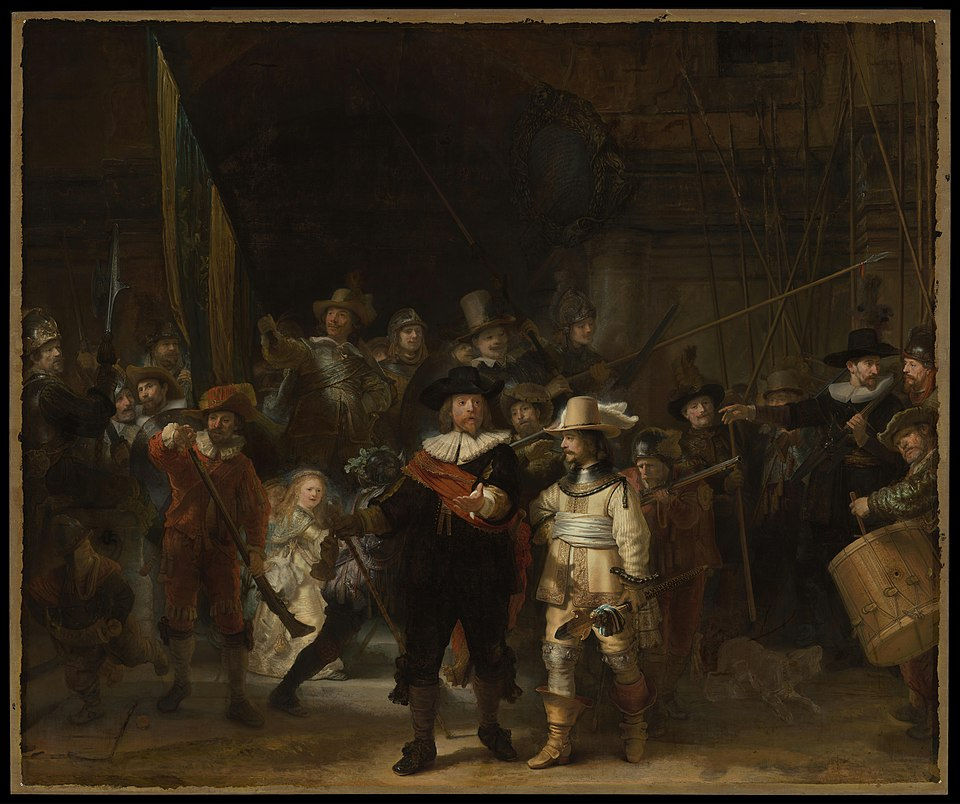An In Depth Journey Through Light and Shadow with the Dutch Masters
- Tabz Jones

- Aug 8
- 4 min read
The Dutch Golden Age, which lasted throughout the 17th century, is famed for its incredible artistic achievements, particularly in painting. This era produced a remarkable array of masterpieces from artists like Rembrandt, Vermeer, and Frans Hals, all of whom skillfully captured the essence of their time. As an art history enthusiast, I find great inspiration in the works of these Dutch masters. Their extraordinary use of light and shadow, along with their intricate attention to detail, allows us to glimpse into the societal and cultural dynamics of that fascinating period. Let’s embark on a captivating journey through the rich world of Dutch paintings, exploring some of the most iconic works and uncovering the elements that make them truly exceptional.
The Rise of the Dutch Masters
The heart of the Dutch Golden Age was the rise of a prosperous middle class that began to value art not only for its religious significance but as an expression of wealth and social status. The Reformation played a vital role in this shift, as wealth transitioned from church patronage to private collections.
Among the standout artists of this vibrant era was Rembrandt van Rijn, often celebrated as the greatest painter of his time. His mastery of chiaroscuro—using stark contrasts between light and dark—communicated profound human emotions and depth.
Consider his famous painting, The Night Watch. This work depicts a group of Dutch civic guards and remains one of the most recognized pieces in Western art. The way Rembrandt directs light onto the central figures generates a sense of drama and action, captivating viewers and drawing them into the narrative. Remarkably, this painting continues to attract approximately 2.5 million visitors to the Rijksmuseum each year.

Everyday Life: The Genre Painters
While the Dutch Golden Age is known for grand historical and religious pieces, it also pays homage to the daily lives of ordinary people. Genre painting gained popularity during this period, with artists such as Jan Steen and Pieter de Hooch excelling at capturing lively domestic scenes.
Jan Steen's The Glass of Lemonade, for instance, invites viewers into a bustling home filled with joyful interaction. The light streaming through the window evokes warmth and familiarity, making it easy to imagine the scene as a snapshot from daily life.
Pieter de Hooch is another notable figure in this genre, celebrated for his exceptional handling of perspective and light. His work, Interior with a Woman Drinking with Two Men, exemplifies domestic life illuminated by soft, soothing light filtering through a window. This attention to detail encourages a sense of intimacy, allowing the viewer to almost step into the painting.

The Mastery of Portraiture
Frans Hals transformed portraiture during the Dutch Golden Age with his dynamic approach to painting. His swift, expressive brushwork captured the essence of his subjects with remarkable energy.

Take, for example, The Laughing Cavalier. This striking portrait engages viewers not just through the subject's elaborate attire but also due to his infectious expression. The warmth of the golden colors breathes life into the cavalier’s character and highlights his individuality.
Hals didn’t shy away from exploring deeper themes either. His portraits often reveal complex human emotions, providing a rich tapestry of reflections on character and personality.
The Mystique of Light: Vermeer’s World
Now, we venture into the realm of Johannes Vermeer, renowned for his exceptional use of light and color. Although only a limited number of his works survive today, each one is imbued with a serene beauty.

Girl with a Pearl Earring is perhaps Vermeer’s most famous piece, often referred to as the "Mona Lisa of the North." The soft illumination that graces the girl's face conveys both intimacy and intrigue, hallmarks of Vermeer’s signature style. His meticulous application of glazes adds a lifelike quality to his subjects.

In another prime example, The Milkmaid captures a tender moment of domesticity, where light gracefully spills into a humble kitchen. This work not only highlights the artist's technical prowess but also invites viewers to engage with the simple beauty of everyday life.
The Impact of the Dutch Golden Age
The Dutch Golden Age's influence on art history is significant and enduring. These masterpieces continue to inspire artists globally, shaping techniques and deepening our appreciation of light and emotional expression in art.
For both art historians and enthusiasts, the works from this period are not just relics of the past; they are vibrant narratives that connect us to the cultural exchanges and societal developments of a bygone era. Each painting is alive with emotion, inviting exploration and reflection.
Reflection on the Dutch Masters
The Dutch Golden Age serves as an extraordinary reminder of the connections between art and life. The creations of Rembrandt, Vermeer, Hals, and their contemporaries reveal not only their exceptional talent but also the vibrant society they depicted.
As you dive deeper into the world of art history, let the interplay of light and shadow from these Dutch masters enrich your understanding of the human experience. Their enduring legacy reminds us that art is not merely a window into the past but also a tool for understanding our present and future.
Whether you are a seasoned art lover or a curious newcomer, I encourage you to explore these masterpieces. Each artwork tells a story, evokes an emotion, and often reflects pieces of our own lives within its canvas. Happy exploring!



Comments